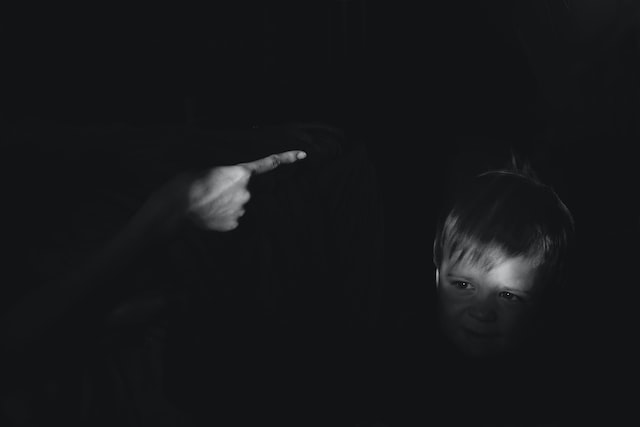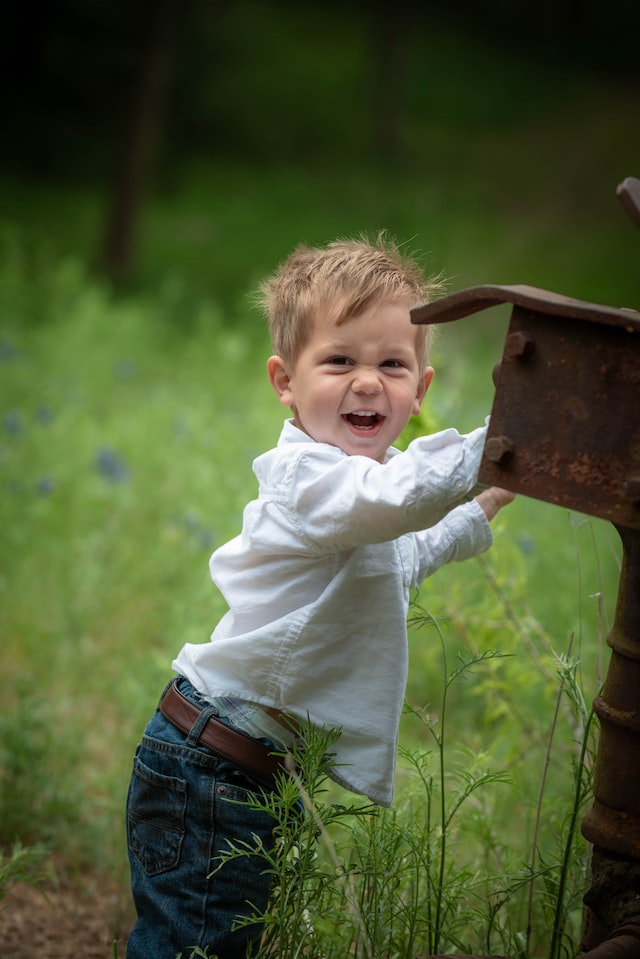Naughty and mischievous are two distinct concepts that can be easily distinguished from one another. While naughty behavior is usually seen as deliberate and intentional, mischievous behavior is often more lighthearted and playful. Both terms describe acts of disobedience but in different ways.
The definition of naughty
(Photo by Artyom Kabajev on Unsplash )

Naughty is defined as disobedient or badly behaved. It can also describe someone who is sexually provocative or someone who enjoys breaking the rules.
Naughty is an adjective that describes someone or something that is disobedient, mischievous, or behaving inappropriately. It can also be used to describe something that is suggestive or sexual in nature. The term can be used playfully to describe someone’s behavior or actions, but it can also have negative connotations if the behavior is harmful or offensive. The exact meaning of naughty can vary depending on the context and the cultural or social norms of the situation.
The definition of mischievous
(Photo by Micah Tindell on Unsplash )

Mischievous is an adjective used to describe a person or behavior that is playful, sometimes causing minor trouble or annoyance, but not intended to cause serious harm or damage. A mischievous person is often characterized as being clever, creative, and enjoying harmless pranks or jokes. However, mischievous behavior can also cross the line into more harmful or dangerous territory, depending on the situation and the level of risk involved. Overall, mischievous behavior is often seen as lighthearted and fun, but it can also be problematic if it becomes too disruptive or causes harm.
Naughty and mischievous are two words that are often used to describe children who are behaving in a way that is not acceptable. However, there is a difference between the two words. Naughty children are those who deliberately disobey rules or behave in a way that is likely to cause trouble. Mischievous children, on the other hand, are more likely to be playful and curious, and their behavior is not usually intended to cause trouble.
Naughty behavior is typically characterized byintentional bad behaviour. This can include things like hitting, biting, yelling, kicking, or tantrums. It is important to remain calm when dealing with naughty behaviour, as getting angry will only escalate the situation. Instead, try to redirect the child’s attention to something positive or constructive. If the behaviour continues, you may need to remove the child from the situation until they calm down.
Mischievous behavior is usually less serious than naughty behavior, and is often done out of curiosity or boredom. This can include things like minor property damage, mischief involving animals, or playing pranks on people. With mischievous behavior, it is again important to stay calm. Try to talk to the child about what they did and why it was wrong. If the child seems remorseful, you can let them off with a warning. However, if the behaviour continues or escalates, more serious consequences may be necessary.
Examples of naughty and mischievous behavior
Naughty and mischievous behavior can take many forms. Some common examples include:
- Disobeying rules or orders
- Acting out in a disruptive or destructive manner
- Defying authority figures
- Behaving rudely or defiantly towards others
- Engaging in pranks or practical jokes
While naughty and mischievous behavior may seem harmless, it can often lead to serious consequences. That’s why it’s important to be aware of the difference between the two.
How to deal with mischievous behavior?
If your child is engaging in mischievous behavior, there are a few things you can do to help redirect their actions. First, it’s important to try and understand why they are behaving this way. Mischief usually stems from curiosity or a desire for attention. Once you know the reason behind the behavior, you can start to address it. For example, if your child is acting out for attention, try spending more one-on-one time with them doing activities they enjoy. If they are being mischievous out of boredom, provide them with more stimulating activities to keep their mind occupied. It’s also important to be consistent with your discipline when dealing with mischievous behavior. Choose a consequence that is fitting for the offense and stick to it every time. This will help your child learn that their mischievous behavior will not be tolerated and will eventually lead to them changing their ways.
How to deal with naughty behavior?
Dealing with naughty behavior depends on the context and the severity of the behavior. Here are some general tips:
- Stay calm: If you react with anger or frustration, it may escalate the situation or encourage the behavior.
- Set clear boundaries: Let the person know what is expected and what is not acceptable behavior. Be specific and consistent with your boundaries.
- Reinforce positive behavior: Praise and reward good behavior to encourage more of it.
- Redirect the behavior: If the person is engaging in harmful or inappropriate behavior, try redirecting them to a more appropriate activity or behavior.
- Address the root cause: Try to identify what may be causing the behavior and address it if possible. For example, if a child is acting out because they are bored or hungry, address those needs.
- Seek help if necessary: If the behavior is persistent or causing harm, seek help from a professional such as a therapist or counselor.
Remember that addressing naughty behavior requires patience, consistency, and understanding. It is important to approach the situation with empathy and a willingness to work towards positive change.
What’s the difference between cheeky and naughty?
Cheeky behavior is usually more lighthearted and playful. It might involve harmless teasing or joking around. Naughty behavior, on the other hand, is often more malicious. It may involve deliberately trying to upset or annoy someone. Additionally, naughty behavior is often motivated by a desire to get a reaction out of someone, whereas cheeky behavior is typically just for fun.
Is mischievous positive or negative?
The term mischievous can have both positive and negative connotations depending on the context and severity of the behavior. In general, mischievous behavior is seen as playful, harmless, and sometimes even endearing. It can be a sign of creativity, intelligence, and a sense of humor. However, mischievous behavior can also cross the line into more harmful or disruptive territory, such as causing physical harm or emotional distress to others. In these cases, mischievous behavior would be viewed more negatively. Overall, the perception of mischievous behavior depends on the situation and the level of harm or disruption caused by the behavior.
What age do children start being naughty?
It varies from child to child. However, it’s generally agreed that the age at which children start testing boundaries and engaging in mischievous behavior is around 3 or 4 years old.
During the preschool years, children are exploring their independence and discovering what they can and cannot get away with. At this age, naughty behavior is often a result of trial and error, as children experiment with different ways to test limits and see what kind of response they get from adults.
While some parents may view their child’s mischievous antics as cute and harmless, others may find them frustrating and exhausting. It’s important to remember that this phase is temporary and that most children will eventually outgrow it. With patience and consistent discipline, your child will learn what behaviors are acceptable and which ones are not.
Can adults be naughty or mischievous ?
Yes, both naughty and mischievous behavior can be exhibited by adults. Naughty behavior is typically characterized by being disobedient or disrespectful, while mischievous behavior is usually more playful and harmless. However, both naughty and mischievous behaviors can result in negative consequences, so it’s important to be mindful of how your actions may affect others.








